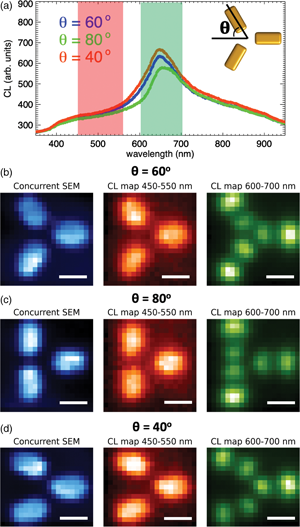Article contents
Mapping Local Surface Plasmon Modes in a Nanoplasmonic Trimer Using Cathodoluminescence in the Scanning Electron Microscope
Published online by Cambridge University Press: 05 May 2020
Abstract

The excitability of local surface plasmon modes in radial trimers composed of gold nanorods was mapped using hyperspectral cathodoluminescence (CL) in the scanning electron microscope. In symmetric trimers, the local plasmon resonances could be excited most effectively at the ends of individual rods. Introducing asymmetry into the structure breaks the degeneracy of the dipole modes and changes the excitability of transverse dipole modes in different directions. CL in the scanning electron microscope has great potential to interrogate individual nanophotonic structures and is a complement to electron energy loss spectroscopy and optical microscopy.
Keywords
- Type
- Australian Microbeam Analysis Society Special Section AMAS XV 2019
- Information
- Copyright
- Copyright © Microscopy Society of America 2020
References
- 4
- Cited by





